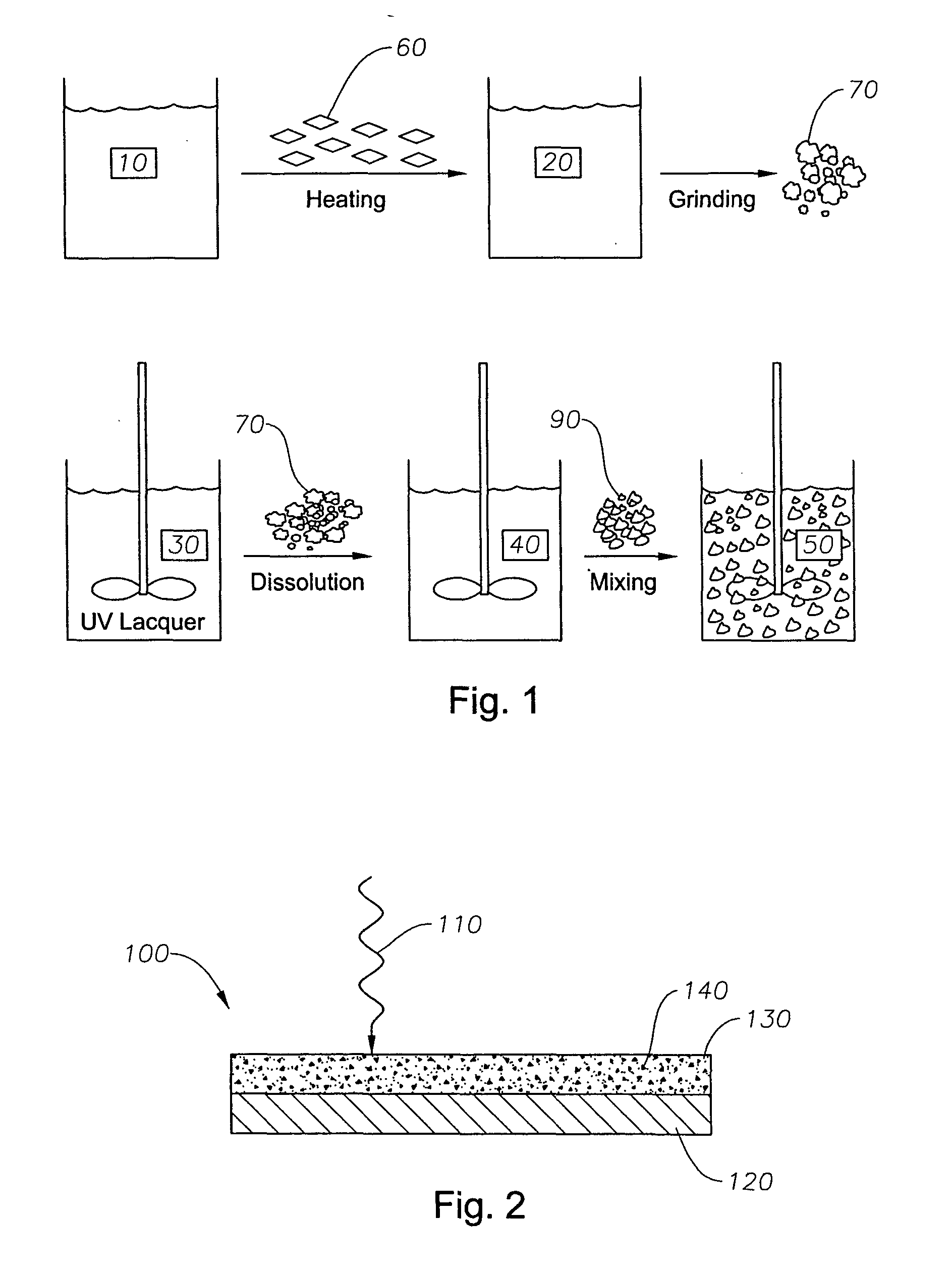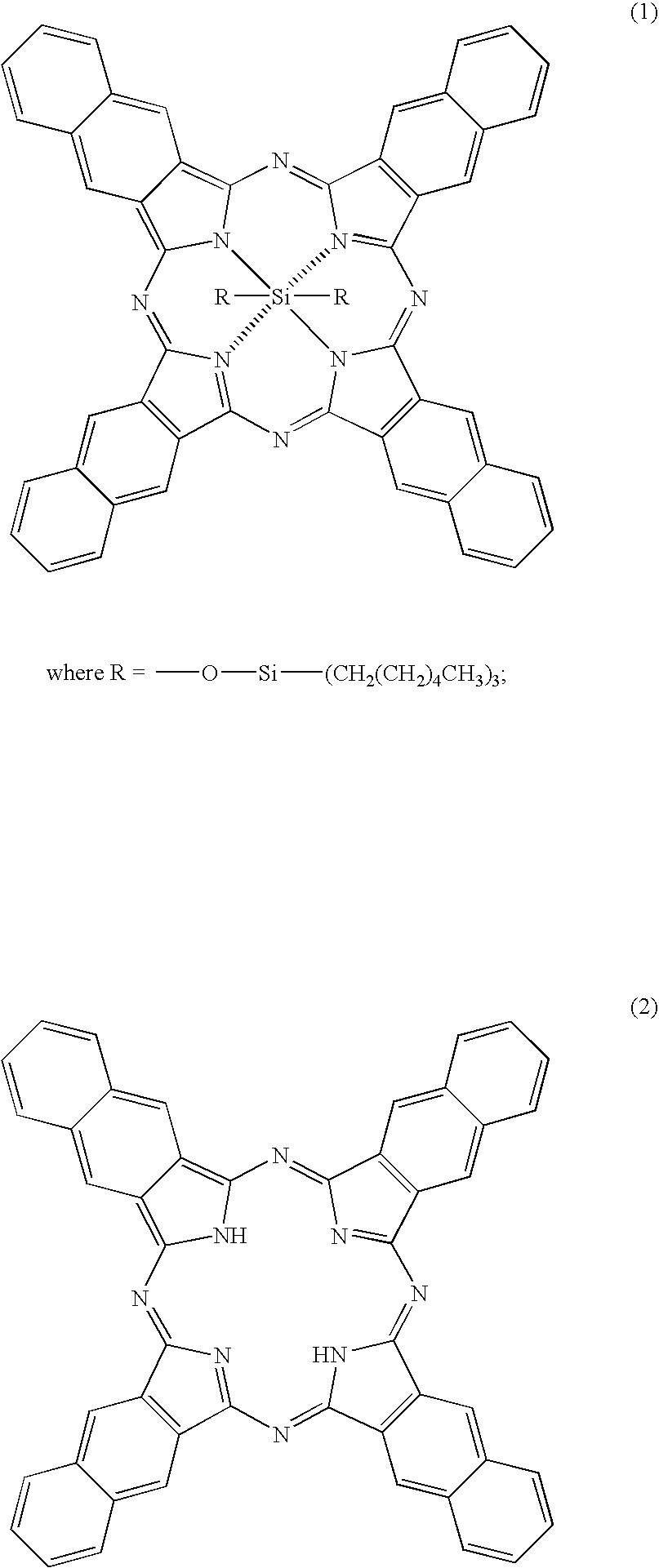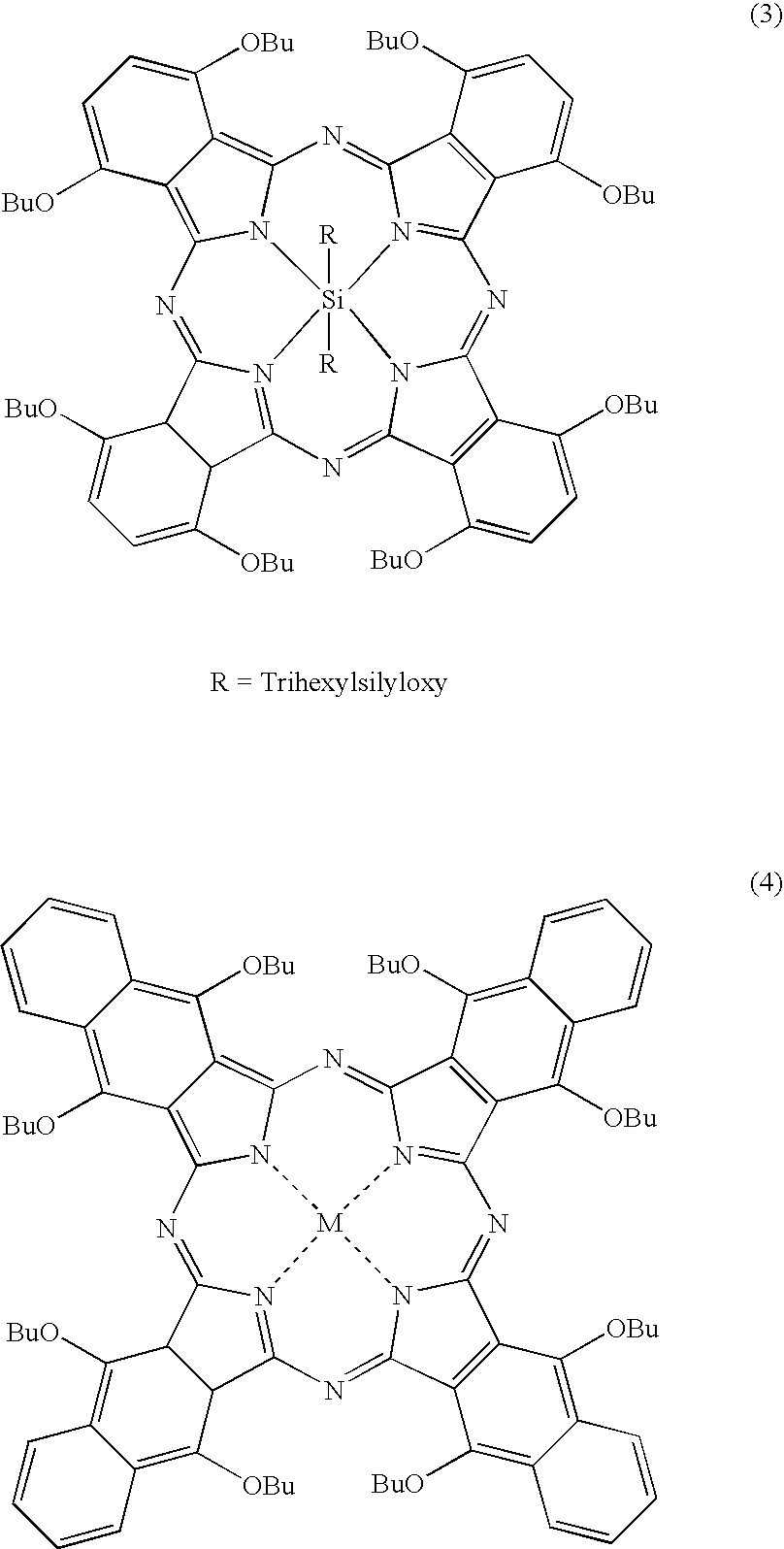Compositions, systems, and methods for imaging
a technology of composition and system, applied in thermography, instruments, photosensitive materials, etc., can solve the problems of loss or diminution of the ability to mark, damage to the imaging substrate, and high energy required to perform the process
- Summary
- Abstract
- Description
- Claims
- Application Information
AI Technical Summary
Problems solved by technology
Method used
Image
Examples
example 1
Referring to the embodiments of FIG. 1, which shows a method for preparing an imaging solution in accordance with embodiments of the present invention, the method may comprise an activator melt 10, an activator / antenna solution 20, a UV curable lacquer solution 30, a lacquer / antenna / activator solution 40, and a two phase UV curable paste 50.
In accordance with the embodiments illustrated in FIG. 1, 2 grams of dibenzyl oxalate was heated to melting (about 85° C.). 20 grams of activator bisphenol-A and one gram of antenna silicon 2,3 naphthalocyanine bis(trihexylsilyloxide) (Formula 1), were dissolved in the melted dibenzyl oxalate. The activator / antenna solution 20 was cooled and ground into a fine powder 70.
Five grams of the ground activator / antenna powder 70 was dissolved in 15.3 g Nor-Cote CDGOOO UV-lacquer 30 to form the lacquer / antenna / activator solution 40.
Ten grams of m-terphenyl (accelerator) 50 was melted in a beaker. The melt 50 was heated to 110° F. 100 grams of 2′-a...
example 2
The method of Example 1 was carried out, except that 20 grams of phenol, 4,4′-sulfonylbis[2-(2-propenyl)-(9CI) (Formula 10):
was used as the activator and 1.2 grams of antenna silicon 2,3 naphthalocyanine bis(trihexylsilyloxide) (Formula 1), were dissolved in the melted dibenzyl oxalate to form the activator / antenna solution 20. Activator / antenna solution 20 was cooled and ground into a fine powder 70. Additionally, instead of using 100 grams of 2′-anilino-3′-methyl-6′-(dibutylamino) fluoran as the leuco-dye, 15 grams of leuco-dye 2-anilino-3-methyl-6-(N-ethyl-N-isoamylamino)fluorane (Formula 11) (average particle size <5 μm) were used to form the accelerator / leuco-dye solution.
As with Example 1, the mixture of leuco-dye / antenna / accelerator alloy and lacquer / antenna / activator solution 40 was formed into a UV-curable paste 90 and screen printed onto a substrate at a thickness of approximately 7 μm to form an imaging medium. The coating on the medium was then UV cured by me...
PUM
| Property | Measurement | Unit |
|---|---|---|
| composition | aaaaa | aaaaa |
| color | aaaaa | aaaaa |
| frequency | aaaaa | aaaaa |
Abstract
Description
Claims
Application Information
 Login to View More
Login to View More - R&D
- Intellectual Property
- Life Sciences
- Materials
- Tech Scout
- Unparalleled Data Quality
- Higher Quality Content
- 60% Fewer Hallucinations
Browse by: Latest US Patents, China's latest patents, Technical Efficacy Thesaurus, Application Domain, Technology Topic, Popular Technical Reports.
© 2025 PatSnap. All rights reserved.Legal|Privacy policy|Modern Slavery Act Transparency Statement|Sitemap|About US| Contact US: help@patsnap.com



